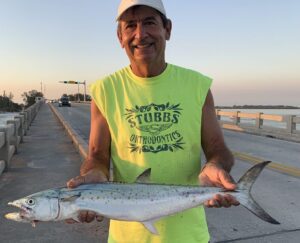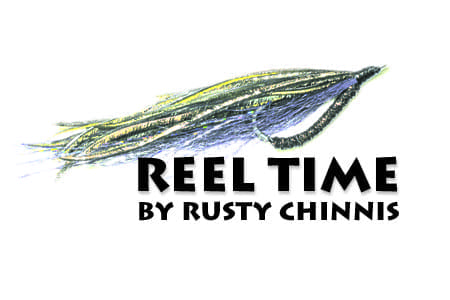Bridges provide anglers who don’t have a boat or don’t want to bother with one some excellent fishing opportunities.
Their structure provides the perfect habitat for fish. Besides the plethora of small baitfish, crabs and other crustaceans that call these places home, bridges provide gamefish a refuge and an ambush point for feeding. The bridges that span the local passes are also natural pathways for fish like pompano, Spanish mackerel, ladyfish and bluefish. These fish migrate from the Gulf to the local bays and feed around the bridge pilings and fenders. Winter and early spring are particularly good times to find action around the local bridges. If you happen to have a boat, you’ll find them a great place to fish too.

This winter has been, thankfully, a bit cooler than past years, and fishing for sheepshead, a perennial winter favorite, has been strong around local bridges. If you wonder when the best time to fish bridges might be, I’d refer to the old saying that the best time to go fishing is any time you can. Having said that, if you have the luxury of picking your time and tide, a morning incoming tide is hard to beat. The second-best time would be a late outgoing tide. Timing your trip to coincide with the beginning or end of the tide cycle will make it easier to deal with the often-strong currents that course through the passes. That doesn’t mean you’re restricted to those times and there are ways to rig that will allow you to deal with any tide stage.
A medium-weight spinning outfit is perfect for fishing the bridges. I prefer a 10- to 12-pound outfit since you’ll have to hoist your catch from the water to the bridge. There are special nets available that can be lowered to help with this operation, but it is one more piece of equipment you’ll have to transport. With most catches, a careful hand-over-hand retrieve will work just fine and your mobility will not be restricted. Gloves are recommended. Depending on what is running, a few lure choices will suffice. One of the most effective lures for fishing the passes is the jig. When the current isn’t particularly strong, a jig tied directly to a 30-pound section of leader will work perfectly. If the tide is strong, a weight will help get the offering down in the water column where most of the action often occurs. To keep the weight from interfering with the jig, tie a section of 40-pound leader with a sliding egg sinker between two small swivels. Then add your leader and jig below. This rig can be used with lures or live bait. Another advantage of this rig is that as it is being worked across the bottom, it sends up a small puff of sand that attracts predators like pompano. One of the advantages to fishing from a bridge is the ability to easily move from one spot to another. This allows the angler to try near the pilings, on the edges of the channel and areas where striking fish might be found. If the action is slow or you’re exploring a bridge and pass for the first time, work both sides of the bridge. Vary your retrieve, working the lure fast and slow, exploring the water column.
Spanish mackerel and bluefish, two common species that frequent local bridges, have sharp teeth and can cut through monofilament leader. There are two options to protect your lure. One is to use a short strand of wire leader or heavy monofilament line. The other is to use long-shanked hooks. Wire leaders can make fish leader-shy if the water is clear. I most often just take my chances. You’ll lose a few lures but, in the end, I’d rather get hits and risk a cutoff than get no hits at all. All things considered, I think you’ll catch more fish without wire. If you do use wire, check out the brands that can be tied like fishing line and use a smaller test (30-pound) leader. The exception to this rule is if you’re fishing turbid water or early and late in the day when the sun is low.
Whatever your fishing style, don’t pass up a trip to the local bridges. The action can be spectacular and the effort required is far less than an outing in a boat.
































